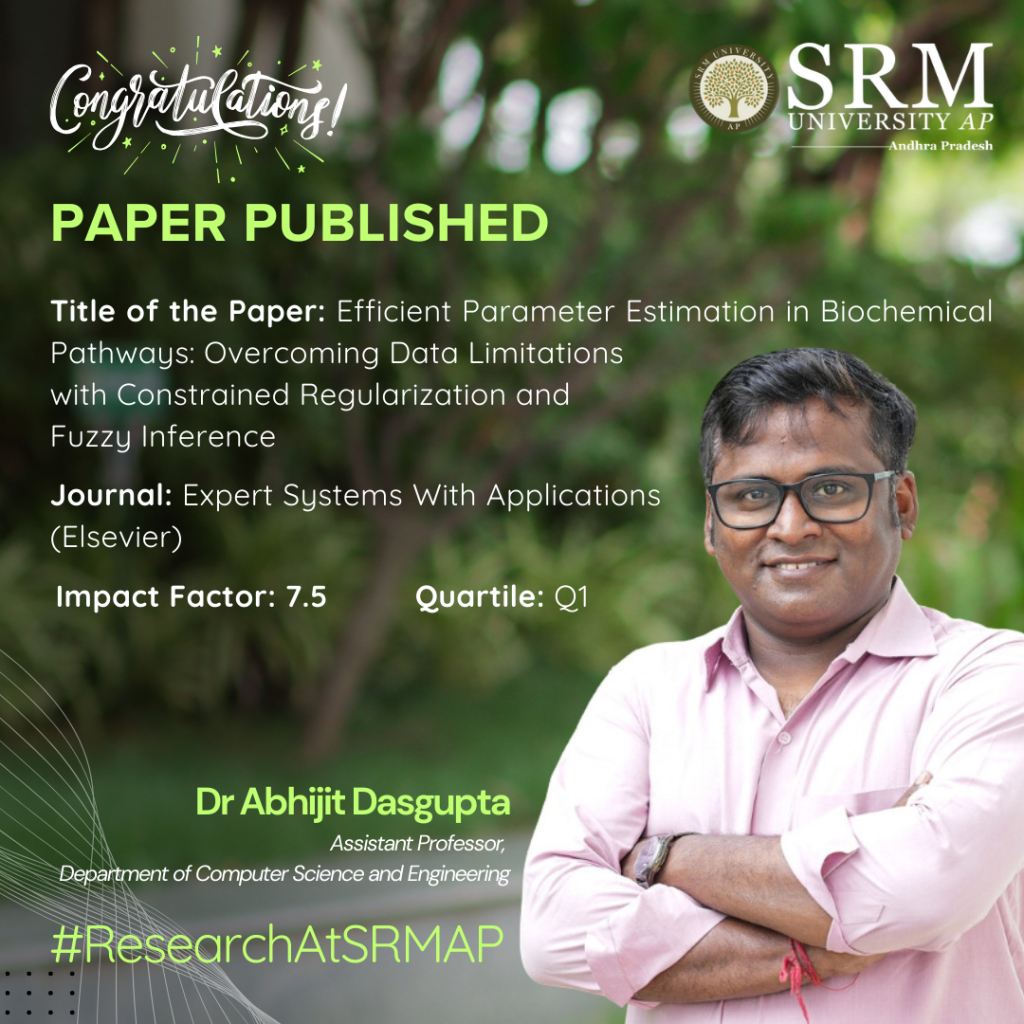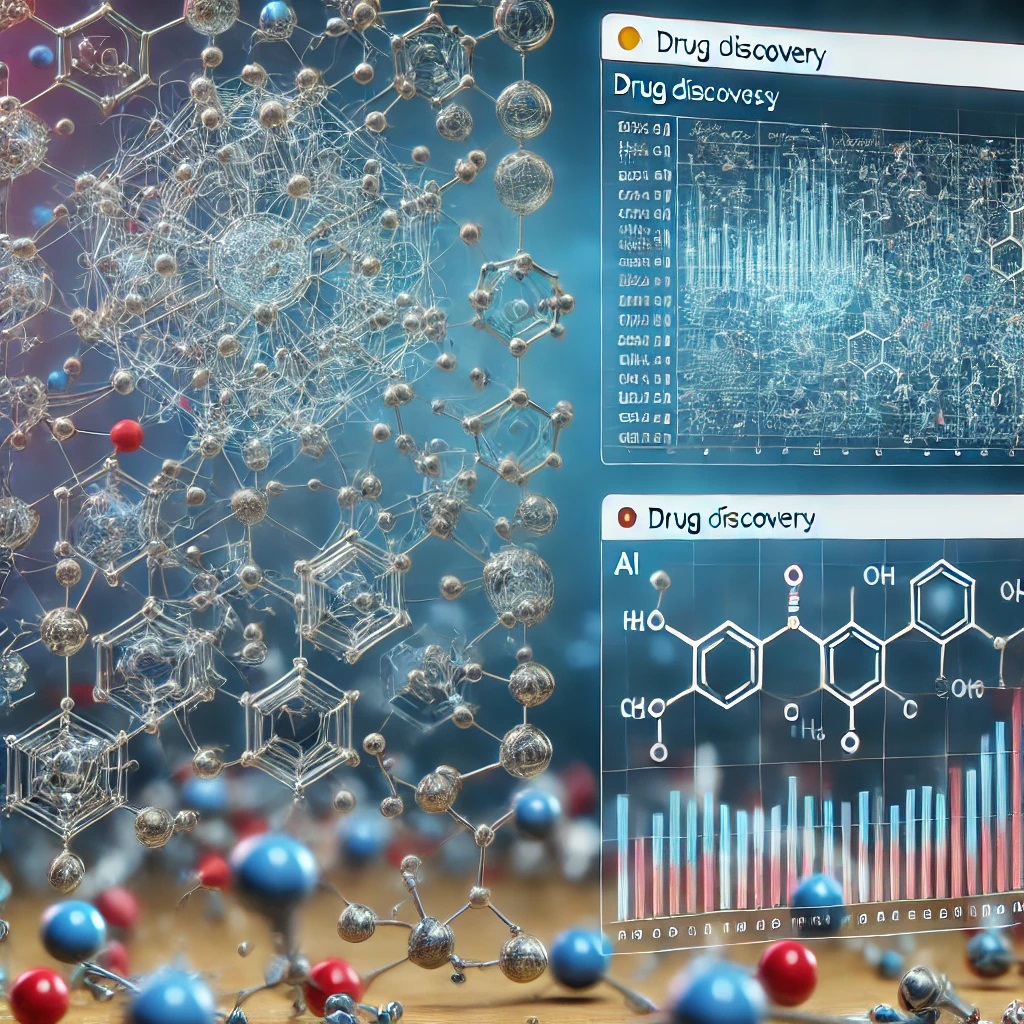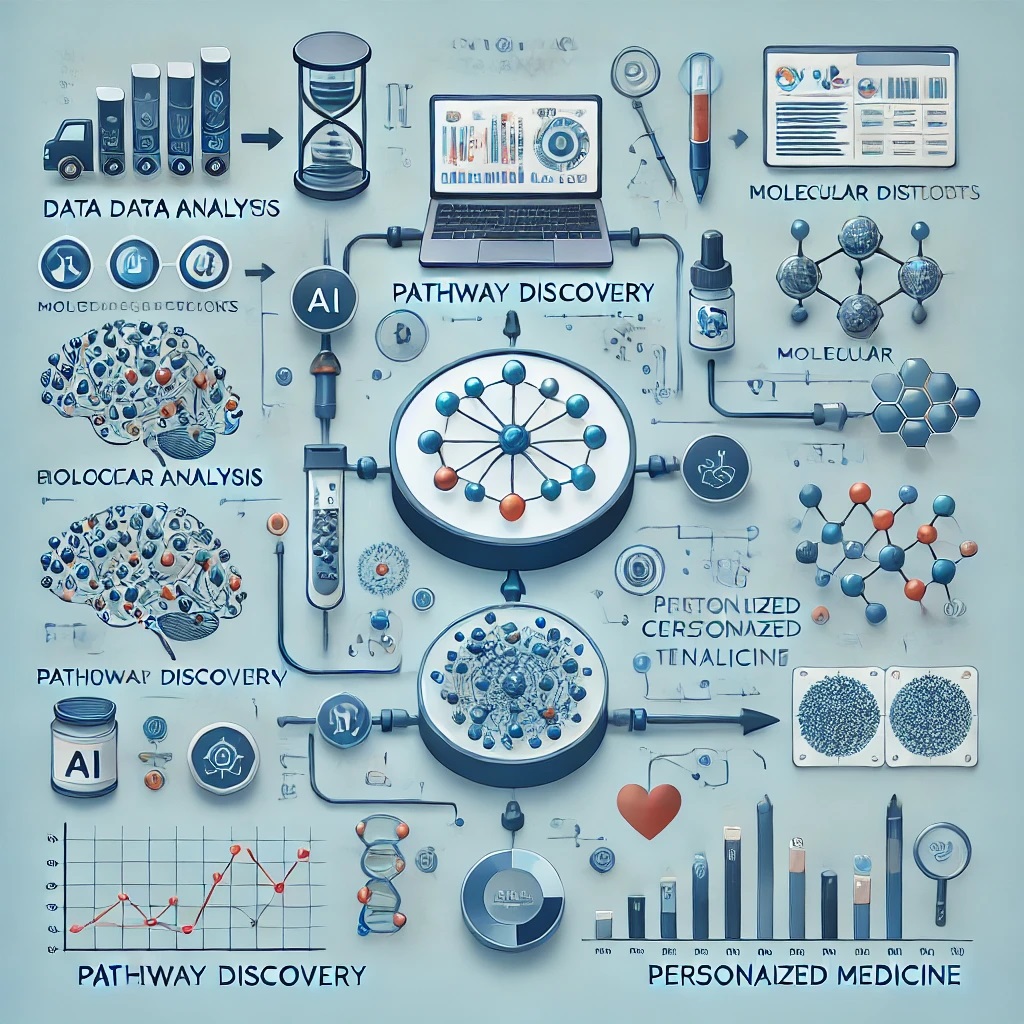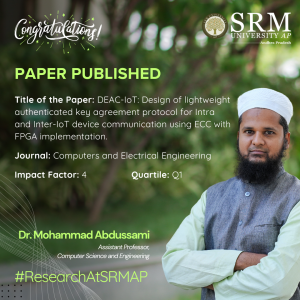Recent News
- A Novel Method to Estimate Parameters in Complex Biochemical Systems October 23, 2024

With the advent of cutting-edge technology, Dr Abhijit Dasgupta, Assistant Professor at the Department of Computer Science and Engineering, has conducted breakthrough research in understanding biochemical systems with limited data in hand. His research has been published as a paper titled “Efficient Parameter Estimation in Biochemical Pathways: Overcoming Data Limitations with Constrained Regularization and Fuzzy Inference” in the Elsevier journal Expert Systems With Applications, having an impact factor of 7.5.
Abstract
This study introduces a new method to estimate parameters in biochemical pathways without relying on experimental data. The method called the Constrained Regularized Fuzzy Inferred Extended Kalman Filter (CRFIEKF) uses fuzzy logic to estimate parameters based on known but imprecise relationships between molecules. To handle complex and unstable data, the method incorporates Tikhonov regularisation, improving accuracy and stability. CRFIEKF was tested on several pathways, including glycolysis and JAK/STAT signalling, and reliable results were obtained. This approach offers a useful tool for estimating parameters in complex biochemical systems, especially when experimental data is limited.
Explanation of the Research in Layperson’s Terms
This research is about finding a new way to predict how living cells work, especially when scientists don’t have enough data from experiments. Normally, to understand how cells function, scientists need to collect a lot of information over time, which can be costly, difficult, or even impossible.
To solve this, the researchers developed a new method that doesn’t need as much experimental data. Instead of relying on exact measurements, their method uses fuzzy logic, which is like making smart guesses based on patterns and relationships we know, even if we don’t have perfect information. They also used a technique to keep these guesses steady and reliable, even when the data is messy or incomplete.
They tested this method on different biological processes, such as how cells turn food into energy (a process called glycolysis) and how cells send signals using proteins (like in the JAK/STAT pathway). The method worked well and gave accurate results.
In simple terms, this research helps scientists predict how cells behave without needing a lot of expensive and hard-to-get data, making it easier to study the complex systems inside living organisms.
Practical Implementation/Social Implications of the Research
The practical implementation of this research lies in its ability to accurately predict how biological systems, such as cells, function without relying heavily on time-consuming and costly experimental data. This method can be applied in various fields, including drug development, personalised medicine, and agriculture, where understanding complex biological processes is crucial. For instance, pharmaceutical companies could use this technique to model how a drug will interact with different biological pathways, speeding up the drug discovery process. Similarly, it could help tailor medical treatments to individual patients by predicting how their unique biological makeup will respond to specific therapies.
The broader social impact of this research is significant. By reducing the need for extensive experimental data, this method can lower the cost and time required for scientific discoveries in healthcare and biotechnology. This could lead to faster development of new medicines, more affordable healthcare solutions, and personalised treatments that improve patient outcomes. In agriculture, this method can help optimise crop growth and resilience, contributing to food security. Overall, this research provides a pathway for more efficient and cost-effective advancements in biology, healthcare, and environmental sciences, ultimately benefiting society by improving health and sustainability.

Collaborations
1. St Jude Children’s Research Hospital, Memphis, USA
2. University of California, San Diego, USA
3. Columbia University, New York, USA
4. Nantes Université, France
5. University of North Carolina at Chapel Hill, USA
6. Institute of Himalayan Bioresource Technology, Palampur, India
7. Indian Statistical Institute, Kolkata, India
8. Aliah University, Kolkata, India
9. Michelin India Private Limited, Pune, India
10. Gitam University, Bangalore, India
Future Research Plans
Building on the foundation laid by this research, the next steps will involve expanding its applications to more complex biological systems and personalised medicine. The following outlines a future roadmap:
1. From Time-Course Data to Pathway Enrichment and Single-Cell Modeling:
The current method, which estimates parameters without relying on time-course data, can be adapted to use time-course data when available. Time-course data captures how biological processes change over time, offering valuable insights. By integrating this data, we can refine the parameter estimation and achieve a more precise pathway enrichment analysis. This approach can be particularly beneficial in single-cell studies, where understanding the variability in cellular responses within complex diseases like cancer, diabetes, or neurodegenerative disorders is crucial. Modelling these pathways at the single-cell level will enable us to capture heterogeneity within tissues and improve disease understanding.
2. Simulating Pathways to Identify Drug Targets:
Once the pathways are enriched and modelled, we can simulate these biological networks to predict how different interventions—such as drugs—might influence the system. This simulation can help identify potential drug targets, particularly those that are critical in disease progression. For instance, by manipulating the modelled pathways, we can observe how specific proteins or molecules influence the disease state, providing insights into where a drug could be most effective.
3. Predicting Drug Side Effects:
After identifying potential drug targets, the next step is to predict the side effects of these interventions. The same model can simulate unintended consequences by analysing how modifying a target impacts other connected pathways. This simulation can provide early warnings about potential side effects, reducing the risk during later stages of drug development. Understanding these off-target effects at an early stage will be crucial for designing safer drugs.
4. Predicting Drug Molecules Using Generative Adversarial Networks (GANs):
Incorporating machine learning, particularly Generative Adversarial Networks (GANs), can take this research to the next level. GANs can be trained to generate new drug molecules by learning from existing drug databases. By feeding the pathway model’s identified targets into the GAN, we can generate candidate drug molecules that are predicted to interact with these targets effectively. This approach can significantly speed up the drug discovery process by automating the design of new drug candidates tailored to specific biological pathways.

5. Integration with Omics Data for Personalized Medicine:
The future of personalised medicine relies on integrating various layers of biological data—such as genomics, transcriptomics, proteomics, and metabolomics—into a cohesive model. By integrating pathway data with these other “omics” layers, this research will facilitate a more comprehensive understanding of individual patient biology. This integration allows for tailored treatment strategies, making personalised medicine more achievable. For instance, based on an individual’s genetic makeup and biological pathways, we can predict how they will respond to specific drugs and design personalised therapies with minimal side effects.
6. Pathway-Based Drug Design and Validation:
Once potential drug molecules are identified using GANs, they can be simulated within the enriched pathways to test their efficacy in silico. These simulations will allow researchers to understand how the drug interacts with the target pathway and its downstream effects. If the simulation shows promising results, the drug candidates can be prioritised for lab testing and clinical trials. This systematic approach, from modelling to simulation, could drastically reduce the time and cost associated with traditional drug discovery processes.
Summary
This plan transforms the current research from a powerful parameter estimation technique into a comprehensive framework for personalized medicine and drug discovery. By expanding to time-course data, single-cell modeling, pathway simulation, and integrating cutting-edge AI techniques like GANs, we can predict drug molecules tailored to individual biological systems. This personalized approach not only streamlines drug discovery but also enhances the safety and effectiveness of treatments, paving the way for more efficient and precise medical interventions.
Continue reading → - Pioneering IoT Security: Dr Mohammad Published in Prestigious Q1 Journal October 17, 2024
 Dr Mohammad Abdussami, an Assistant Professor in the Department of Computer Science and Engineering, has made a significant contribution to the field of Internet of Things (IoT) security with the publication of his paper titled “APDEAC-IoT: Design of Lightweight Authenticated Key Agreement Protocol for Intra and Inter-IoT Device Communication Using ECC with FPGA Implementation.” This groundbreaking research has been published in the esteemed Q1 journal Computers and Electrical Engineering, which boasts an impact factor of 4.
Dr Mohammad Abdussami, an Assistant Professor in the Department of Computer Science and Engineering, has made a significant contribution to the field of Internet of Things (IoT) security with the publication of his paper titled “APDEAC-IoT: Design of Lightweight Authenticated Key Agreement Protocol for Intra and Inter-IoT Device Communication Using ECC with FPGA Implementation.” This groundbreaking research has been published in the esteemed Q1 journal Computers and Electrical Engineering, which boasts an impact factor of 4.Dr Abdussami’s research addresses critical security challenges faced by IoT devices, particularly in facilitating secure communication between intra and inter-device networks. The lightweight authenticated key agreement protocol he has developed utilizes Elliptic Curve Cryptography (ECC) and Field-Programmable Gate Array (FPGA) implementation to enhance the security framework of IoT ecosystems.
As the adoption of IoT devices continues to expand across various sectors, the importance of robust security protocols cannot be overstated. Dr Abdussami’s work is poised to make a substantial impact on how devices communicate safely and efficiently, ensuring the integrity and confidentiality of data transmitted over the network.
As the demand for secure IoT solutions continues to grow, Dr Abdussami’s research stands as a beacon for future developments in this crucial area, potentially paving the way for safer and more efficient IoT interactions globally.
Abstract:
In this research work, we proposed a fog-enabled network architecture integrated with IoT devices (Intra and Inter-domain IoT devices) and developed the DEAC-IoT scheme using Elliptic Curve Cryptography (ECC) for secure authentication and key agreement. Our protocol is designed to protect device-to-device communication from security threats in resource-constrained IoT environments.
Citation format:
Abdussami Mohammad, Sanjeev Kumar Dwivedi, Taher Al-Shehari, P. Saravanan, Mohammed Kadrie, Taha Alfakih, Hussain Alsalman, and Ruhul Amin. “DEAC-IoT: Design of lightweight authenticated key agreement protocol for Intra and Inter-IoT device communication using ECC with FPGA implementation.” Computers and Electrical Engineering 120 (2024): 109696.
Explanation of the Research in Layperson’s Terms:
With more and more devices connecting wirelessly through the Internet of Things (IoT) (think of smart home gadgets, wearables, etc.), keeping their communications secure has become a big priority. However, many current communication methods for IoT devices don’t provide strong enough security. This leaves them open to cyber-attacks.
The challenge is to create a security system that is safe from attacks and doesn’t require too many computations. This is important because IoT devices often have limited resources (like low battery power or slower processors).
In this research, the authors have devised a solution: a new type of network setup (called fog-enabled architecture) that connects IoT devices with each other and with external devices. They’ve also developed a security protocol called DEAC-IoT, which uses Elliptic Curve Cryptography (ECC)—a highly efficient method for securing communications.
Their system makes it easier for IoT devices to authenticate (verify each other’s identity) and securely exchange keys (used to encrypt data), all while being lightweight enough to run on devices that don’t have a lot of processing power or energy.
In short: the paper offers a way to securely connect IoT devices with minimal computations, making communication between devices safe from hackers, even in environments where cyber threats are common.
Practical Implication and Social Implications Associated:
The practical implementation of this research can strengthen the security of IoT devices across many sectors, from homes and cities to healthcare and industries. The proposed DEAC-IoT scheme can also be used to implement vehicle to vehicle secure communication in autonomous vehicles, VANETs and Internet of Vehicles scenario.
Socially, it can enhance trust in IoT technology, protect privacy, safeguard critical infrastructure, and promote economic and technological development—while ensuring security remains affordable even in resource-constrained environments.
In Industrial IoT (IIoT) Scenario: In industries where machines are connected via IoT (such as in factories), devices need to communicate securely to ensure the smooth running of production lines. The DEAC-IoT protocol could secure these communications, preventing industrial espionage or sabotage.
Future Research Plans
1. Design of group key authentication protocols for IoT devices communication.
2. Design of handover authentication protocols for Fog-enabled IoT devices communication.
3. Design of quantum safe authentication protocols for vehicle-to-vehicle communicationCollaborations:
1. Dr Sanjeev Kumar Dwivedi, Centre of Artificial Intelligence, Madhav Institute of Technology and Science (MITS), Gwalior, Madhya Pradesh 474005, India.
Continue reading →
2. Dr Taher Al-Shehari, Computer Skills, Department of Self-Development Skill, Common First Year Deanship, King Saud University, 11362, Riyadh, Saudi Arabia.
3. Dr Mohammed Kadrie, Computer Skills, Department of Self-Development Skill, Common First Year Deanship, King Saud University, 11362, Riyadh, Saudi Arabia
4. Dr P Saravanan, Department of Electronics and Communication Engineering, PSG College of Technology, Coimbatore, India.
5. Dr Ruhul Amin, Department of Computer Science & Engineering, IIIT Naya Raipur, Naya Raipur 493661, Chhattisgarh, India
6. Dr Taha Alfakih, Department of Information Systems, College of Computer and Information Sciences, King Saud University, Riyadh 11543, Saudi Arabia
7. Dr Hussain Alsalman, Department of Computer Science, College of Computer and Information Sciences, King Saud University, Riyadh 11543, Saudi Arabia

